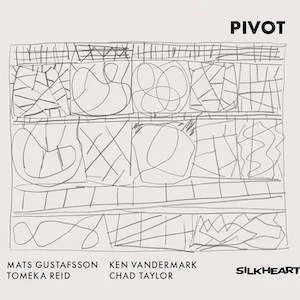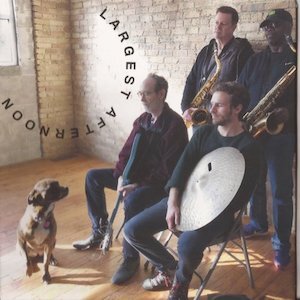Label: Silkheart Records, 2025
Personnel - Mats Gustafsson: baritone and tenor saxophones, flute; Ken Vandermark: tenor saxophone, Bb and bass clarinets; Tomeka Reid: cello; Chad Taylor: drums.
This mighty exploratory quartet—featuring a dazzling frontline with saxophonists Mats Gustafsson and Ken Vandermark, and the rhythm section of cellist Tomeka Reid and drummer Chad Taylor adding both drive and nuance—will leave avant-gardists and free jazz enthusiasts in heaven with their control of structure and unrestricted freedom. The session was recorded in Chicago in late 2024 and comprises four compositions each by Gustafsson and Vandermark, along with six freely improvised duos featuring every possible pairing within the lineup.
“The Sensation of Sliding” begins with cello pizzicato joining the horns in a quiet unison theme. Yet suddenly, it veers into a ferocious burst of energy with cacophonous saxophone layers, slashing cello, and sturdy drumming. A groovy 12-beat cycle then kicks in, evoking the Black American music tradition with its anthemic melody. Jaw-dropping solos—from Vandermark on bass clarinet and Gustafsson on baritone sax—are darkly hued and substantively muscular. Like the former track, “Drops of Sorrow, Accelerating” is a Gustafsson composition inspired by the writings of Danish poet and novelist Inger Christensen. Here, the group adopts an ancient, Sun Ra-like feel that channels his modal Nubian journeys. Gustafsson’s intense outcries contrast with the melodic contours of Vandermark’s phrasing.
The remaining two Gustafsson narratives are “Unmeasured Mile”, a cinematic, dramatic piece with standout work from Reid and Taylor, who gets heavy on toms; and “Popular Music Theory”, which concludes the album in furious avant-garde delirium.
The Vandermark-penned pieces are equally striking, especially “Blowing Out From Chicago”, a supple display of timbral and textural imagination. Rusty, serrated cello underpins the ecstatic theme statement, with Reid building added tension through chromaticism and staccato attacks, complementing Gustafsson’s fiery tenor improvisation. Though Gustafsson blows from deep within, Vandermark is equally fervent in his tribute to the city he loves, delivering an authoritative tenor solo. His “Epistemological Slide” highlights Taylor’s rhythmic prowess, while “I Am Aware, Standing in Snow” reveals eclecticism through cello lines evoking Eastern chants, as gospel tradition fuses with radiant jazz fanfare. The two horn players close the piece unaccompanied, gently restating the theme in unison after previously leading the off-the-hip explorations with focus and intensity.
Flexible pulses, melodic incisiveness, and distinctive timbral qualities - all blend beautifully at the hands of a reference quartet we can only hope records together more often.
Favorite Tracks:
01 - The Sensation of Sliding ► 02 - Blowing Out From Chicago ► 04 - Drops of Sorrow, Accelerating










